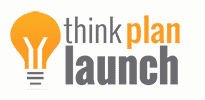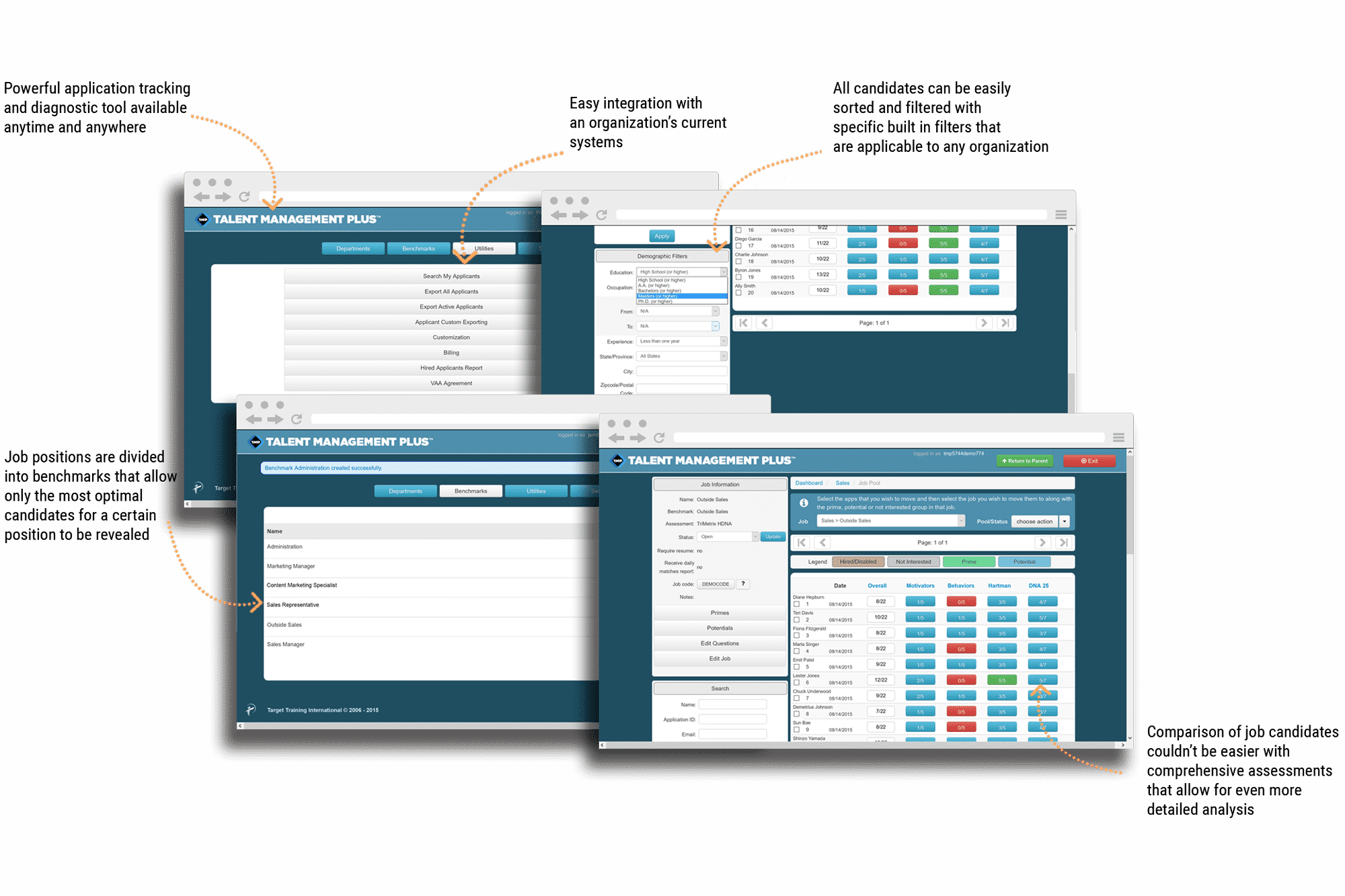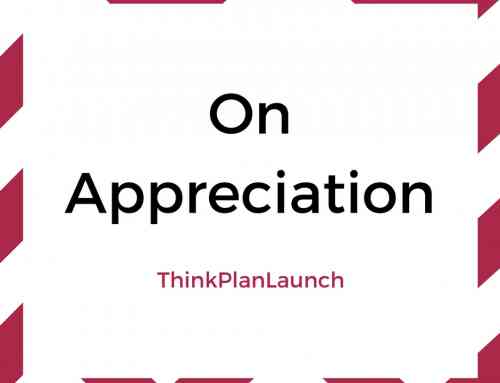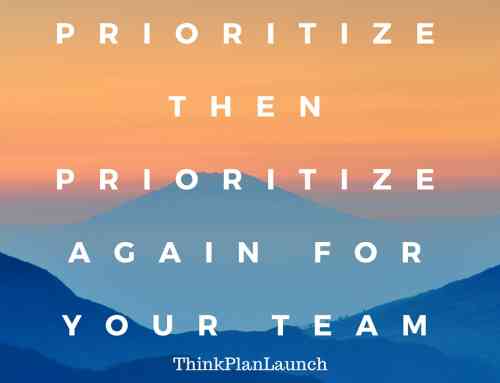Recruitment process biases are detrimental to performance. Having a bestselling product, the most respected brand, the highest reach, or the biggest market share are some of the most desirable goals of any ambitious company looking to extend its profits. However, one of the most under-appreciated metric of a successful company is the retention of their workforce. Turnover. Some large corporations are able to tout that they have the best perks, highest salaries, and top talent. Unfortunately, even these giants struggle with employee turnover resulting in losses in productivity and revenue.
Bad hiring decisions cause a significant amount of turnover. A lot of the bad decisions are made in the recruitment process by unconscious biases. Depending on the job position, turnover might cost anywhere from a third of the employee’s annual salary to up to five times the salary depending on which study you look at. The higher up someone is in the organizational hierarchy, the more a company has to lose.
Staff turnover cost is 50% – 150% of annual salary – Mercer Human Resources Consulting
The costs of turnover include extra recruitment costs, temp and contract hires, vacancy costs, lost revenue and productivity, loss of customers due to poor service, and even litigation. The impact of an employee leaving affects the morale and productivity of the workforce. A company’s reputation among potential candidates is also affected when ex-employees spread the word about their bad experiences.
22% – Annual Quit Rate 2014 – Bureau of Labor Statistics
The productivity and success of a workforce largely depends on whether each individual is right for the job. Without the right fit, employees and managers struggle to create job satisfaction. Each position calls for a number of requirements to be met but the weight placed on each requirement is usually not optimal. Skills and experience are often factored higher than other critical criteria such as behaviors, motivators, emotional intelligence, and acumen. While many techniques and systematic procedures exist and are used by companies to determine fit, there are a lot of opportunities for biases to affect the recruitment process when a lot of these other areas aren’t fully considered. To complicate things further, as recruiters pass off potential candidates to senior management to make the final decisions, more people get involved in the recruitment process and the potential for biases becomes higher.
In order for a workforce to succeed, biases must be eliminated so that only candidates that fit the job are hired.
Table of Contents
Types of biases in the recruitment process
There are a number of unconscious biases that can affect hiring decisions. We will look into some of the major ones.
Recruiting similar people
Cultural fit is is highly prized for hiring candidates as a factor of success. Each company should have its own culture based on the nature of its business. However, many times, recruiters can make the mistake of regarding personal similarities between candidates and themselves as a sign of cultural fit. It is easy to hire people you want to hang out with. Shared hobbies, interests, and experiences might help create rapport, but it does little to ensure that a candidate possesses the right factors for success in an organization. Cultural fit is really about sharing core believes, values, and behaviors.
For those of you who already know your DISC type, understand that the High-C is vulnerable to selecting similar people.
Perceived threats to the decision maker
Hiring someone who might replace the decision-maker someday can be a cause for concern. If the candidate’s resume looks better, than the idea that the higher-ups could consider the candidate as a replacement starts to become more real. This threat can introduce a bias into the recruitment process when the candidate is being interviewed by their potential managers. Such a concern should not exist in companies. Any company that hopes to grow needs to encourage the practice of hiring people who are better and smarter than the current workforce, especially, the managers. Job performance criteria will vary for each role up and down the ladder. Certain candidates who possess incredible talent and the right behavior and motivators will do well under the leadership of effective management but might not possess what’s needed to be a leader themselves. Only a small number of these individuals will do well as a leader since it requires different behaviors, motivators and levels of emotional intelligence. Managers who are decision makers in hiring need to be reminded of this fact so they can be reassured that their job is not constantly under threat.
Bias from stereotyping
Most people like to think of themselves as being unaffected by the influence of stereotypes. It is a hard thing to overcome however. Resumes and cover letters offer many chances for stereotypes to affect the recruitment process. The names of candidates, their university, former companies, and other bullet points on a resume can be unfairly scrutinized and a good candidate can be ruled out prematurely.
White sounding names tend to be given unfair attention, as well as people who have studied at similar universities as the recruiters and workforce.
Other races might even gain undeserved benefit from stereotypes because of their association with talent in math and sciences. One thing that is undeniable is the disparity in racial diversity in top management. Certain races are seen as not being effective as a leader or negotiator. After careful investigation of leaders from different ethnic backgrounds, these stereotypes can be easily dismissed.
Gender Bias
Another often noted issue in top management is the disparity in the number of females who attain the top ranks. A lot can be said about the perceived differences between males and females but again, each job position usually requires a set of behaviors, motivators, and level of emotional intelligence that is independent of gender.
One important thing to note, is that the career paths of men and women can be radically different depending on the circumstances of their family obligations. Also, if women have experienced a gender bias in their previous line of work, their opportunity to grow and advance their career has been stifled. Their ability to demonstrate success in their career is limited.
Oddly enough, recruiters who hire more than 20 people a year are more apt to a gender bias. Experience as a recruiter has no bearing on biases.
Bias from appearance
Suppose someone has survived the bias associated with gender and race observed in the resume and has progressed to the face-to-face interview. The next chance for a bias is with the appearance of the candidate.
Clothing, height, weight, body language, tone of voice, and other points of judgement have lasting effects that downplay the critical factors of success for a job.
The first impressions are hard to ignore since human psychology places undue emphasis on it. Certain roles might call for the abilities of candidates to stand out in a crowd, but if the position doesn’t require it, there should be careful consideration of its influence.
Confirmation Bias and use of intuition
Sometimes a candidate might seem like a good match for a job because of some particular reason. It could be a habit, personal style, alma mater, or other feature that is not related to job performance. For example, if the top salesmen in the company all graduated from Arizona State University, than the current candidate who is from the same school must be a good salesman too. It can trigger positive emotions in the recruiter due to their experience with people of similar nature who are successful. If the recruiter starts to rationalize to themselves that this candidate must be a great fit, than they have a confirmation bias. It isn’t much better than being superstitious.
Recruiters may subconsciously get a “gut feeling” that the person is going to be great for the job. There are many traps here as recruiters can easily overlook red flags that might indicate potential problems. The concerns should be higher for recruiters who have been in the business for a while and have developed confidence in their judgement. (DISC High-D managers often can gloss over the details). The results for hiring decisions might not be measurable for months or years making it hard to credit good hires based on this intuition. If left unchecked, a significant portion of the workforce could have been hired because of the wrong things.
Catching biases
There are a number of things you can do to become more aware of biases in the recruitment process. Understanding and acknowledging each of the types of bias will be a great first step. From there, an analysis of the current workforce is good to determine any anomalies, trends, or disparities. Are there more men than women for position A? Are there more women than men for position B? How about race? How does the workforce compare to the candidate pool in terms of diversity? These kinds of questions help identify existing biases and determine to what extent action is needed. While it could be the industry itself that limits opportunities for each segment, and thus, applicants, the potential still runs high.
Celebrating cultural diversity is also a good way to raise awareness. Who are some of the heroes in the industry that are being admired by the organization? Are both genders and multiple races being represented? Showcasing some of these people to the organization will do wonders for everyone’s subconscious minds. Check out these giants in the health care industry.
Stopping biases from hindering the recruitment process
Biases are often inevitable somewhere within the recruitment process. From scanning resumes to making the final hiring decision, there is a need to minimize the impact of biases. To maximize the potential for the right candidates to be included in the recruitment process, the first steps of hiring are critical. If the number of right candidates that make it from resume to interview is high, there is less potential for the wrong people to be included in the final decisions. Proper qualification of candidates is needed to lessen the impact of disruptions and wasted time in the recruiting process.
Typically, emails, or applicant tracking software is used to gather resumes from potential candidates. Depending on the volume of candidates, one tool might be more cost-effective than the other. Email is typically part of a company’s normal operating expenses while applicant tracking software can range from low cost to exorbitant. For recruiters who must shift through hundreds to thousands of emails, applicant tracking software makes a lot of sense.
Email is also weak because some of the biases can be introduced when only surface information, such as names, for example, is highly visible.
Applicant tracking software allows companies to filter, sort, and analyze their applicant pool based on parameters filled in by candidates on customized forms suited for each position. Certain keywords in resumes can be highlighted so that recruiters are looking at those with relevant experience. Not all applicant tracking software is equal though. Each one offers a range of different features.
Talent Management Plus™ (TMP) goes a step beyond applicant tracking and offers job benchmarking which allows customized criteria or presets determined for each job position to rank applicants based on their inherent behaviors, motivators, and variety of other factors. Candidates are given a score which will help recruiters ensure only the right people are shortlisted for interviews.
Let’s say you don’t have access to job benchmarking software. The interview itself will need to uncover many things that recruiters need to extract out of each candidate. Candidates on their own will do little to reveal their behaviors, motivators, signs of emotional intelligence, and interpersonal skills. They are usually not trained recruiters themselves and are clueless to what needs to be brought up during the interview.
While some companies are famous for asking a range of uncanny questions to gain insight on a candidates critical thinking skills, there are other questions that are needed to be asked during the interview that will provide objective data about the candidate.
Before any interview should be conducted, each position requires a thorough analysis from recruiters, managers, and high performance individuals to determine which specific criteria is important. Behaviors, motivators, emotional intelligence, interpersonal and intrapersonal skills, and stress handling are some of the most important areas to focus on. It is also necessary to make sure that each of the selected questions includes a rubric to objectively measure each candidate for comparison purposes.
A person applying for an administration position, for example, will require different motivators than someone who is applying for creative director. A candidate for project manager will need a different set of behaviors than an insurance agent. Determining which questions are needed is critical for the success of the candidate.
After the right criteria is selected, interviewers should make sure to include these questions in the interview process and take accurate measurements according to their rubric.
Once there is measurable data for each candidate, recruiters can be more confident about which candidates should advance to the next steps. This kind of information should also be passed along to the decision-maker. Making objective, unbiased hiring decisions will significantly reduce turnover and the associated costs.







Leave A Comment